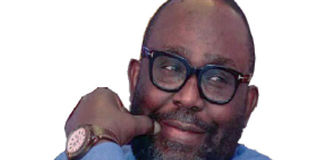Prime
Things your Ugandan teachers and parents never told you

What you need to know:
- It is an insanely ambitious and crazy project and just as it was taking off, Covid-19 came along, and rained on our parade. Research into offline archives, where most of the older historical material on Africa on the continent lies, became impossible.
I have been heading up a book project, a popular historical account of journalists who shook trees in 16 eastern African countries over the last 100 years.
It is an insanely ambitious and crazy project and just as it was taking off, Covid-19 came along, and rained on our parade. Research into offline archives, where most of the older historical material on Africa on the continent lies, became impossible.
The virus took its toll on the spirit of some of authors, and we lost them. But Africans can be dogged, so while there is still some pushing to do, a potentially wonderful book will be coming to a bookshop near you next year along with a Covid-19 vaccine.
There are many books and studies on journalism, and especially press freedom. We didn’t want to do another one. We journalists can get unbearably preachy and whiny when we write about our tormentors.
So, we asked three simple, but turns out complex, questions which journalism history and scholarship rarely ask. Who were/are the interesting eastern African journalists, photojournalists, and more lately digital warriors, out there? What stories did they tell? What impact did they have? The result is surprisingly remarkable.
As our book made its way to the maternity war, I received a designed ready-for-the-printer manuscript from my friend and Daily Monitor Public Editor Charles Odoobo Bichachi. His book was already in the ward and in full labour. It’s about the Uganda Martyrs, a subject most educated and good (Christian) religious Ugandans probably think they know everything there is to know about. However, Bichachi’s book is set to reveal how little we know. It is a tour de force, with its fair share of dramatic twists and turns. Much like we did, it is interesting to see how much is still to be found about African stories and histories, if we step back from “analysing significance,” “critiquing,” “contextualising,” and even “decolonising,” and ask; what happened? When it did it happen? Where did it happen? Who did what, to who? Who lost? Who won?
It is hard and tedious work, but provides a lot of new materials that will make for far superior big picture analysis, and myth-busting, a genre which is seeing a recovery, more recently in Apollo Makubuya’s Protection, Patronage, or Plunder? Imperial Machinations and (B)uganda’s Struggle for Independence.”
For example, I knew very little about female Uganda martyrs. Now from the manuscript, I do, and imagine how intrigued I was to discover that one of them is buried a short crow’s flight from my village in Tororo.
I think he has set us on a path to a whole new scholarship on how women have been written out of the history in Uganda, and Africa at large, and Christian martyrdom. Can’t wait for the real thing, and to get in some reviews in the coming weeks after it emerges from the press.
This is exciting, because it does something that we haven’t achieved; provide popular content for documentary making. Prof Mahmood Mamdani’s Politics and Class Formation in Uganda is a profound book, but getting a movie or documentary script from it is probably harder than drawing water from a stone.
There are a few others out there, and we will rethink a lot of things when and if they come out. I read the chapters of Winnie Byanyima’s book as she wrote it. There was a lot of wild reporting in the Uganda press about it. The reality couldn’t be more different. It’s partly a riveting story of some of Uganda’s earliest feminists. They didn’t know it; just were just stubborn women standing up to unreasonable men.
The nerdy David Kaiza, is sitting on many books. Some years ago, he traversed eastern Africa, and I was riveted over a cappuccino in Nairobi, as he told me about what the names of plants in the region told about migration and culture.
It brings up one of my favourite stories by veteran Kenyan journalist Philip Ochieng, who did a stint in Uganda decades ago. Among other things, it touches on how Buganda became Buganda.
As he tells it, credit goes to Baganda women. The Luo migration was upended when it reached present-day Buganda. The Luo word for “big population” is oganda. They hadn’t seen as many people on their path up the Nile as when they reached fertile Buganda, so they exclaimed “oganda”. They had also not seen women with such big backsides.
The Luo used to circumcise, but the Baganda didn’t. To make cultural acceptance by Baganda women easier, the Luo gave up circumcision – and everything else.
Unfortunately, Philip is unwell, so we might never read the book and see the evidence, but that there is a story for the ages.
Mr Onyango-Obbo is a journalist,
writer and curator of the “Wall of Great Africans”. Twitter@cobbo3





